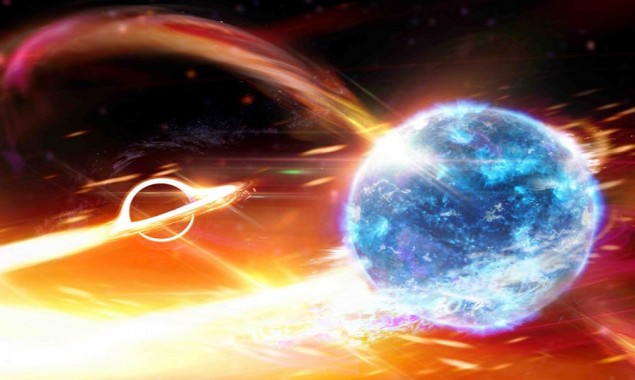Singapore has banned a controversial Kashmir film that praised by Modi
Singapore has outlawed a divisive Indian film portraying Hindus fleeing Muslim-majority Kashmir,...

Deep space black holes discovered preying on neutron stars
A beast resides in the heart of our spiral-shaped Milky Way galaxy: a supermassive black hole with 4 million times the mass of our sun, devouring any material straying within its strong gravitational attraction, including gas, dust, and stars.
Scientists have been studying this Milky Way denizen with the Event Horizon Telescope (EHT), a global network of observatories working together to observe radio sources associated with black holes, and have scheduled an announcement for Thursday that indicates they may have finally captured an image of it. Sagittarius A*, or SgrA*, is the name of the black hole.
Black holes are very dense objects with such strong gravity that even light cannot escape.
There are several types of black holes. The smallest are stellar-mass black holes, which are generated when huge individual stars collapse at the conclusion of their life cycles. There are also black holes of intermediate mass, which represent a step higher in mass.
Because black holes do not allow light to escape, they are difficult to observe. The project’s researchers searched for a ring of light — super-heated disturbed matter and radiation circling at incredible speeds around the event horizon’s edge — surrounding an area of blackness that represented the real black hole.
The shadow or silhouette of the black hole is what we call it.
The Milky Way, often known as a spiral galaxy, resembles a spinning pinwheel when viewed from above or below, with our sun on one of the spiral arms and Sagittarius A* in the centre. There are at least 100 billion stars in the cosmos.
On Thursday, simultaneous press conferences will be held in the United States, Germany, China, Mexico, Chile, Japan, and Taiwan. Huib Jan van Langevelde, a radio astronomer from the Netherlands, is the current EHT project director.
Doeleman stressed the supermassive black hole size scale.
According to Doeleman, “There are big things out there and we are small.”
Added, “But that’s also kind of uplifting in a certain way, too. We’ve got a lot to explore in the universe.”
Catch all the International News, Breaking News Event and Latest News Updates on The BOL News
Download The BOL News App to get the Daily News Update & Follow us on Google News.